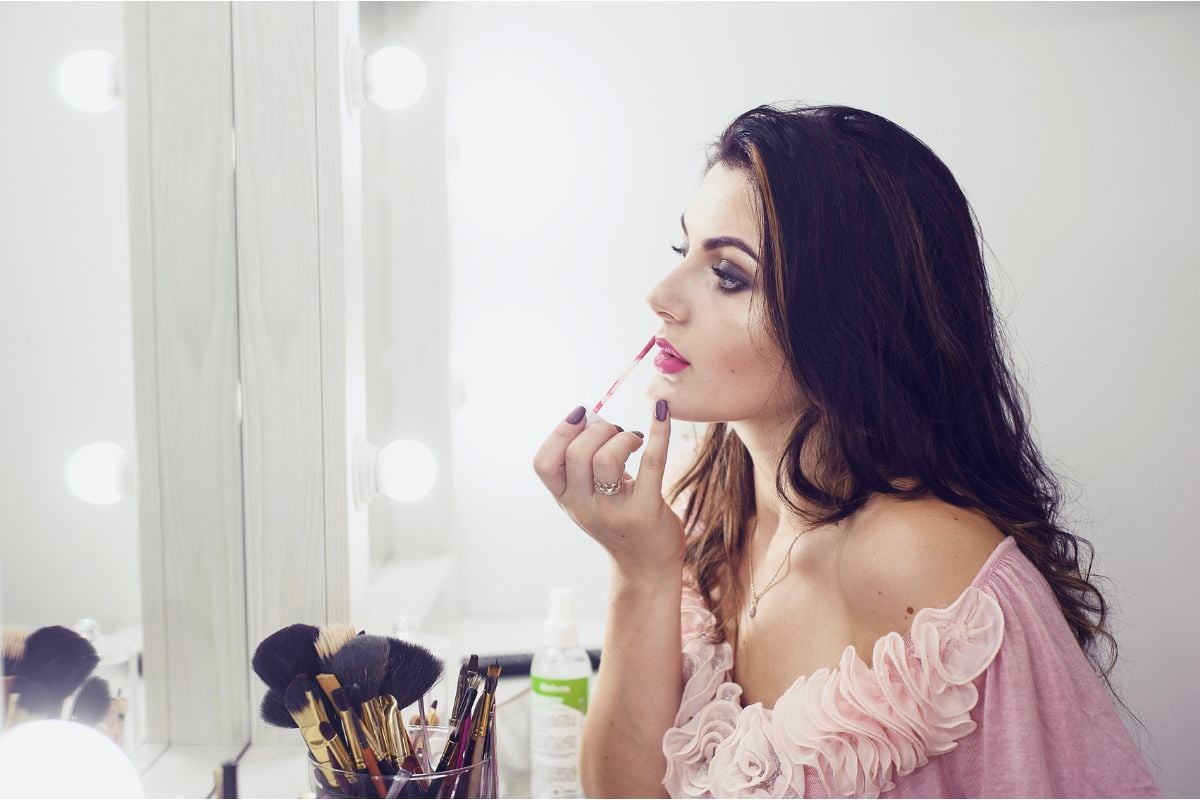What Are Polysorbates? Read This Before You Shop!

Throughout our daily lives, we use a myriad of chemicals as part of our normal routines. While learning about all of them is likely impossible, I believe it is helpful to familiarize ourselves with chemicals that are used extensively, across many product categories. From the food we eat to the personal care products we use and the medications we take, the polysorbate family often has a seat at the table.
Polysorbates are incredibly common, but how much do you know about them? Should we be concerned? In today’s post, I’m giving you a crash course on polysorbates. I shed light on what they are, why they are used, and whether they pose any risks to our well-being. Understanding the chemicals we come into contact with daily is crucial for making informed decisions about our health and lifestyle. So, let’s get started!
What Are Polysorbates?
To begin, polysorbates are a special class of chemicals that have versatile applications. First, the primary role of polysorbates is to emulsify. Emulsifiers combine oil and water into stable and uniform mixtures. Second, polysorbates can also act as surfactants (reducing surface tension). And third, polysorbates aid in solubilization, where they help substances dissolve in water (source).
Furthermore, it is important to understand the process in which they are manufactured – which is known as ethoxylation (source). Ethoxylation occurs when ethylene oxide, which has been linked to cancer, is reacted with another chemical. In this case, it is sorbitan ester of fatty acids that reacts with ethylene oxide (source). Ethoxylation can be done with the intent to make the chemical less harsh (source). It may sound good, but this process can create a small amount of another toxic substance called 1,4-dioxane. As well as leave residual ethylene oxide in the product (source). Given that 1,4-dioxane can readily penetrate the skin and ethylene oxide has developmental and reproductive concerns, these are two carcinogenic substances that we do not want in our products (source and source)!
My experience as a product researcher and product manufacturer advisor for ingredient safety has taught me that even so-called “green,” “organic,” and “natural” brands use polysorbates. However, ethoxylated ingredients, including polysorbates, are not allowed according to COSMOS standards for natural and organic products (source).
So, while polysorbates exhibit valuable properties in enhancing the performance and stability of various products, questions about the safety of ethoxylated ingredients have arisen. Continue reading to learn about the uses and risks of ethoxylated ingredients, including polysorbates.

Types Of Polysorbates
Interestingly, I have encountered a wide range of polysorbates reviewing ingredient labels, and perhaps you have, too! Polysorbates are distinguished by a number, typically: 20, 40, 60, 80 or 100. The number corresponds to the amount of ethylene oxide moles added during manufacturing (source). However, the most common types are 20, 60, and 80 that we are going to discuss.
Polysorbate 20
Despite polysorbate 20 being one of the lower polysorbates, it is a very popular ingredient. You may find it listed as Tween 20, and it is also a common wetting agent in food (source).
Furthermore, you can find polysorbate 20 in skincare. It is an excellent solubilizer for essential oils and water-based products as it helps lightweight oils disperse (source). In addition, its surfactant properties are used in pharmaceuticals and medical treatments to enhance delivery and/or absorption (source).
Polysorbate 60
If you have ever made homemade baked goods or ice cream you may have noticed they aren’t the same as what you find in the store. In the food industry, polysorbate 60 is often used as an emulsifying agent in producing baked goods. Such as bread, cakes, and pastries. It helps improve the texture and volume (source).
Additionally, polysorbate 60 is used in some dessert toppings, icings, and other confectionery items (source). You may also find polysorbate 60 in topical cosmetics as well as lotions, gels, and cleansing products (source).
Polysorbate 80
Arguably, polysorbate 80 is the most widely used variety. It can emulsify heavier oils and is commonly used in bread, cake mix, salad dressing, shortening oil, and chocolate. As well as in dairy products, such as yogurt (source and source). You will also find polysorbate 80 in food that is processed to enhance the stability of ingredients (source).
In the cosmetic industry, formulators use polysorbate 80 in products such as lotions and creams. In the pharmaceutical industry, polysorbate 80 is utilized in the formulation of medications. Including oral, topical, and injectable drugs (source and source). It helps to solubilize and stabilize certain drugs, increasing their absorption (source).

Are Polysorbates Safe?
As you can see, polysorbates are used in almost every product category. So, let’s discuss their safety, specifically their risk for 1,4-dioxane contamination and ethylene oxide leftover: how concerned should we be?
First, while the amounts of carcinogens in ethoxylated ingredients is probably not significant enough to increase your risk of cancer, I believe products should not be made with carcinogens in the first place.
To extend this point, despite many companies assuring me over the years that there are no concerning amounts of 1,4-dioxane in their ethoxylated ingredients, not even ONE company has ever been able to produce a test that would prove that. To me, it is a red flag – why not share the evidence if they have it? And if they don’t test for it, how can they be so sure?
I have come across an argument that because the Food & Drug Administration (FDA) has found that 1,4-dioxane contamination has decreased over the years, it’s not an issue (source). That is great news, but it doesn’t take the risk off the table. Nor does it remove the responsibility of the companies to do their due diligence to ensure that they use safe ingredients. In fact, the FDA still states that ethoxylated ingredients should be vacuum stripped during the manufacturing process to ensure no carcinogens are left in the final product. Yet, not a single company that uses ethoxylated ingredients has told me that their suppliers take these measures (source).
Important Findings
Furthermore, studies have shown that polysorbate 80 altered the intestinal mucus barrier and mucosal barrier (source and source). In my opinion, these emerging findings are important to researchers as they reevaluate the risk of its use in food. Also, I wonder what this small amount of carcinogen does to our skin microbiome when applied topically. To be clear, I have no data on that, but I assume it is not good.
Moreover, this study found that small amounts of residue of alcohol ethoxylate on dishes from rinse aids and dishwasher detergents caused intentional inflammation and barrier damage. So, while polysorbates and many other ethoxylated ingredients are permitted in food, personal care, and home products, I think there is a need for further research and increased regulation.
Once again, COSMOS, a standard for natural and organic products, also holds this perspective as polysorbates are not permissible under their guidelines (source). Personally, I have been able to avoid them in my home without sacrificing clean dishes, effective beauty products, or delicious food.
And last, but not least, I don’t believe it is a good idea to manufacture toxic chemicals because they pollute the environment. Indeed, spills or improper disposals can happen. Plus, whatever is introduced to the environment ends up in the water we drink, the food we eat, and the air we breathe.

Polysorbate-Free Products
Alright, you must be thinking, how do I find polysorbate-free products when polysorbates seem to be everywhere? The last thing I want to do is increase your stress. And that is why with every blog post I create, I provide you with resources and options to move forward. In fact, all of the products you find on my page are free of polysorbates and ethoxylated ingredients. It means that you can use the shop section of my website without concern.
Savvy Consumer Superpower E-Book
Next, if you are looking to take matters into your own hands, I have another amazing resource. My easy-to-read Savvy Consumer Superpower E-Book is dedicated to teaching you how to evaluate products yourself in a matter of seconds. And that’s empowering! Because I have been researching consumer products since 2012, I was able to compile a concise list of the most harmful and common ingredients. If you spot one of them in a product, you can assume that there are most likely other harmful ingredients and contaminants. Hence, by using this method, you can eliminate skincare, sunscreens, beauty, and personal care products that may increase the risk of an allergic reaction, immune suppression, hormone disruption, or cancer. You will also learn industry-relevant information. And you will even get my wallet-sized Superpower Prompt Sheet so you can make a purchase at a store wisely.
Notably, ethoxylated ingredients can be found in cleaning products as well. You can learn more about how to find non-toxic cleaning products in my blog post How To Clean Your House Without Chemicals. Switching out cleaning products is often a place many people feel comfortable starting with when detoxing their homes. The good news is you have plenty of excellent and affordable options!
Lastly, due to popular demand, I created an extensive gift guide of non-toxic products as a reference guide! This Best Non-Toxic Holiday Gift Ideas post is perfect for the holidays – covering anyone on your list, but it works year-round as well. Chances are, you will find a great deal of things you can gift yourself, too!
Conclusion: What Are Polysorbates?
The Best Brands Avoid Using Ethoxylated Ingredients, Like Polysorbates, In Favor Of Safe And Eco-Friendly Ingredients.
Simply put, I don’t trust companies that while describing their products as “natural” and “safe” choose to use a little bit of carcinogens. In my opinion, they don’t care much about the health of our planet and people. The truth is, products with ethoxylated ingredients often belong to brands that use other potentially toxic substances as well. So your efforts to avoid them are worth it! To get a better idea of the other toxins to avoid, read my blog post Hidden Ingredients in Cosmetics.
Further, because we can’t completely determine ingredient quality online, I wouldn’t trust the fact that companies that use ethoxylated ingredients source high-quality and high-purity ingredients. You can rest assured that the brands you find at I Read Labels For You are carefully sourced and will always be free of concerning ingredients like polysorbates.
Be sure to look through the I Read Labels For You blog for other useful information on products and ingredients. Also, visit our non-toxic products shop and purchase our unprecedented e-books on baby wipes, diapers, and permanent hair colors. Finally, if you need help figuring out your next step in your healthy living journey, take advantage of a consultation with me.

Download The Free Guide!
5 Powerful Steps To A Non-Toxic Home
Join our informed consumer community and get our free guide the “5 Powerful Steps To A Non-Toxic Home”.

 Written by
Written by 





Before commenting, please read our Comment Policy.